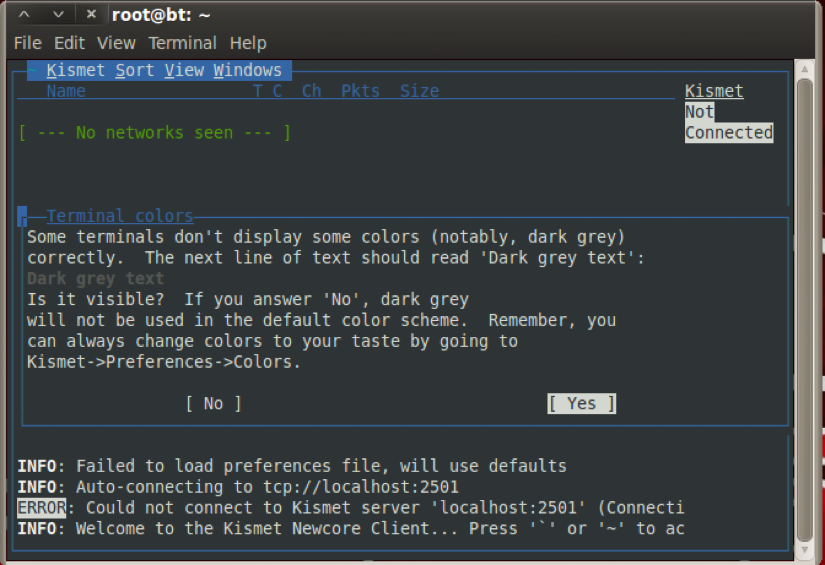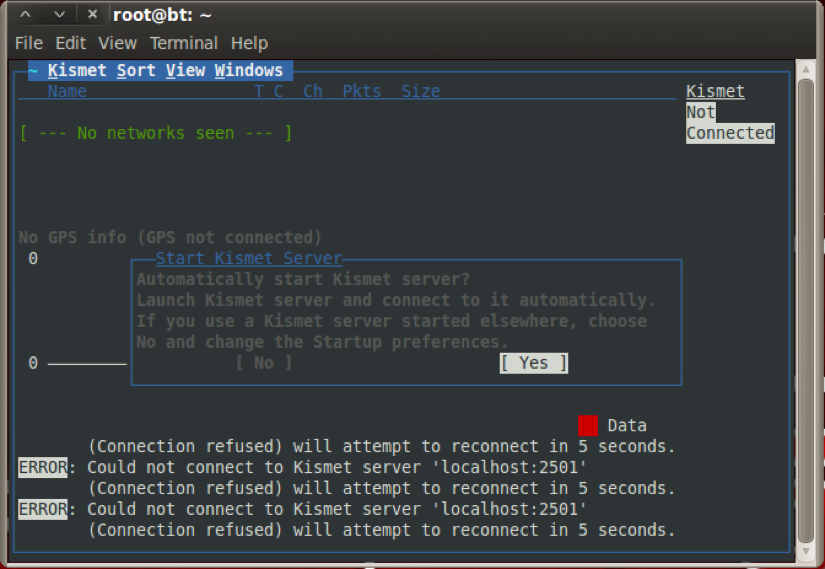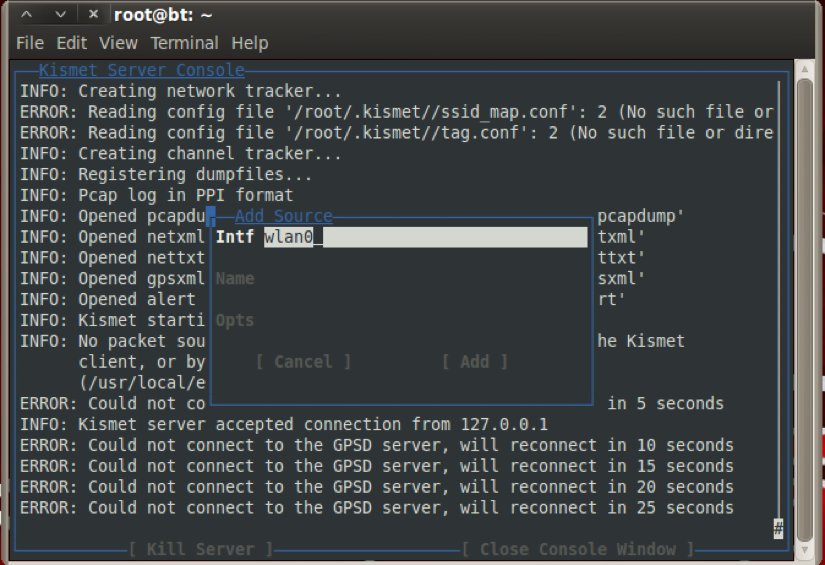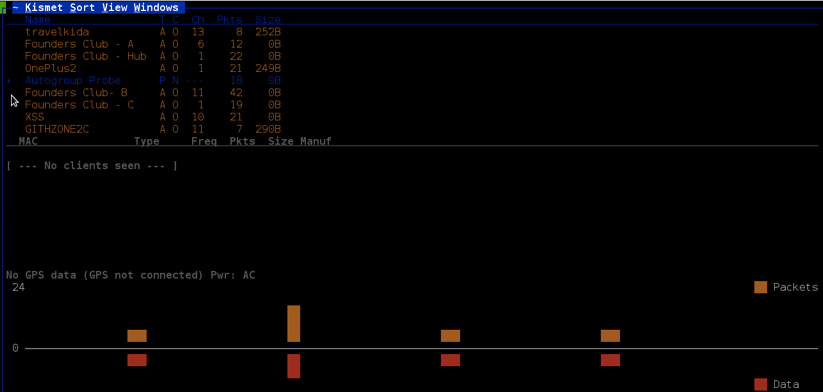Sniffing around with Kismet
Kismet is a layer 2 wireless network detector. It comes in handy because while performing pentest in a corporate environment, we may need to look for wireless networks as well. Kismet can sniff 802.11a/b/g/n traffic. It works with any wireless card that supports raw monitoring modes.
In this recipe, we will learn how to use Kismet to monitor Wi-Fi networks.
How to do it...
To learn about Kismet follow the given steps:
- We use the following command to launch Kismet:
kismetThe following screenshot shows the output of the preceding command:

- Once the GUI is up, it will ask us to start the server, and we choose
yes:

- Next, we need to specify a source interface, in our case it is
wlan0, so we type that. Make sure the interface is in monitor mode before initializing it in Kismet:

- Now we will see a list of all the wireless networks around us:

- By default, Kismet listens on all the channels, so we can specify a particular channel by selecting the entry
Config Channel...from theKismet...




































































